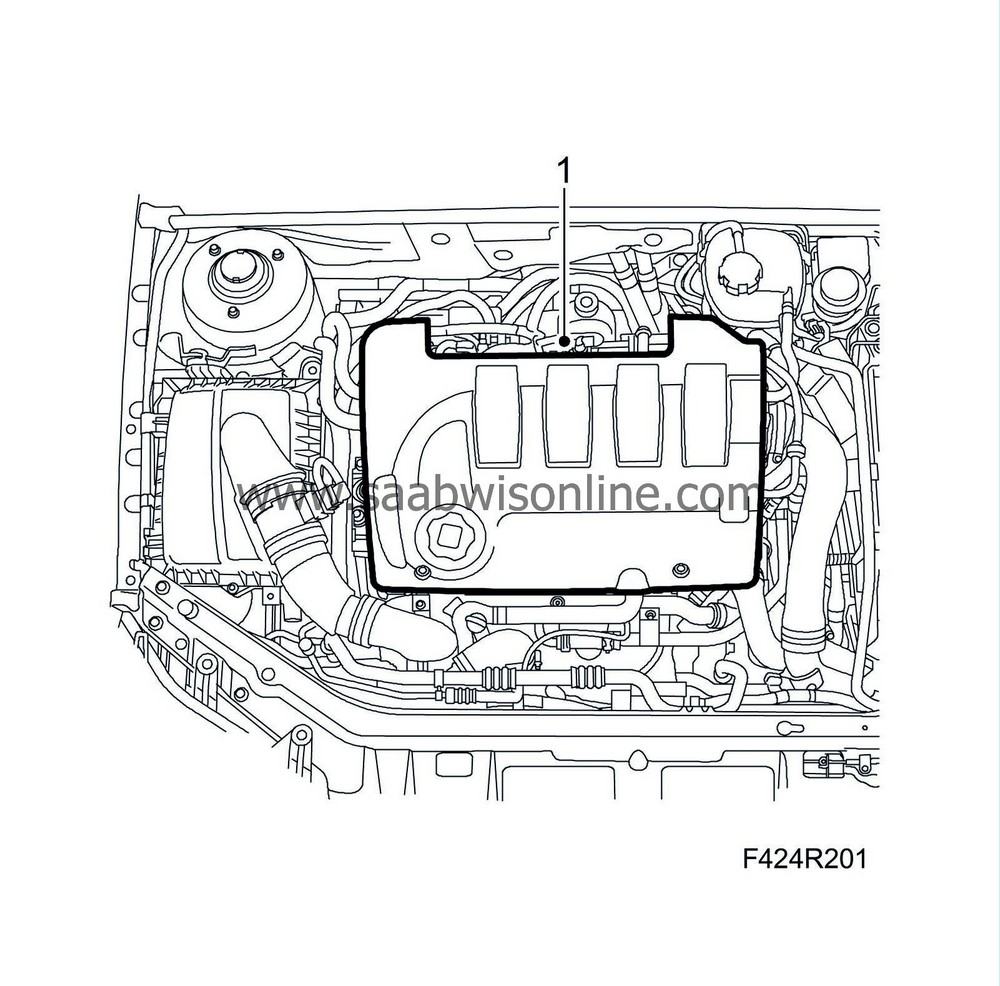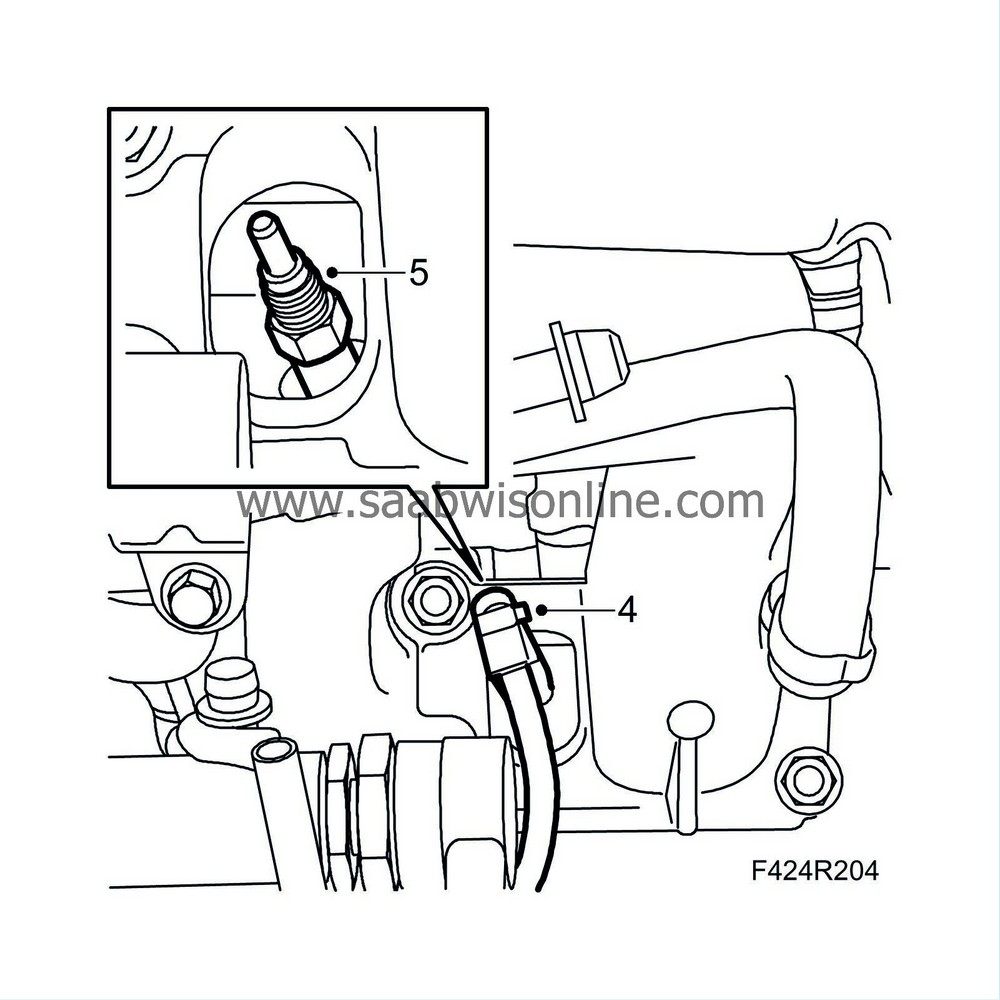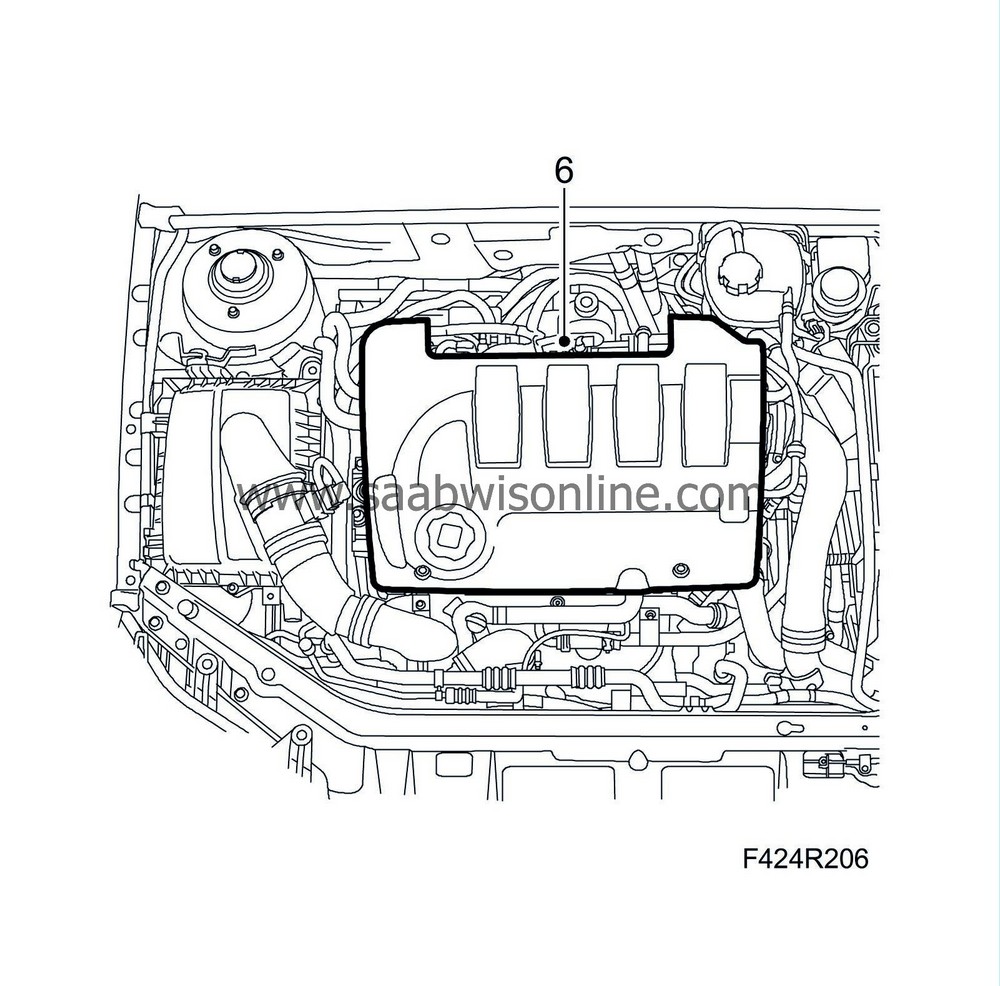Glow plug (398), Z19DT
| Glow plug (398), Z19DT |
|
||||||||||||||||||||||
| Important | ||
|
Be very thorough in terms of cleanliness when working in the fuel system. Malfunctions can also occur due to very small dirt particles. Prevent dirt from entering the fuel system by cleaning the hoses and plugging the pipes and lines upon removal using 93 161 370 Plug set. Store the components so that contaminants cannot enter. |
||
| Important | ||
|
Always use wing covers when working in the engine bay. |
||
| To remove |
|
|||||||
| 1. |
Remove the upper engine cover and insulation.

|
|
| 2. |
Remove the injector connector and detach the wiring harness from the intake manifold. Lift up the wiring harness slightly.

|
|
| 3. |
Remove the fuel pipes from the injectors and the fuel rail.

|
|||||||
| 4. |
Remove the glow plug connector.

|
|
| 5. |
Remove the glow plugs. Use a 10 mm deep socket.
|
|
| To fit |
| 1. |
Fit the glow plugs. Use a 10 mm deep socket.
Tightening torque 10 Nm (7 lbf ft) 
|
|
| 2. |
Fit the glow plug connector.
|
|
| 3. |
Check that the fuel pipe sealing surfaces are not damaged and are clean. Fit the pipes without strain and mount the nuts by hand.
Tightening torque 25 Nm (18 lbf ft) 
|
|
| 4. |
Fit the wiring harness and plug in the injector connectors.

|
|
| 5. |
Connect an exhaust hose and start the engine. Check the fuel system for leaks.
|
|
| 6. |
Fit the insulation and the upper engine cover.

|
|

 Warning
Warning

